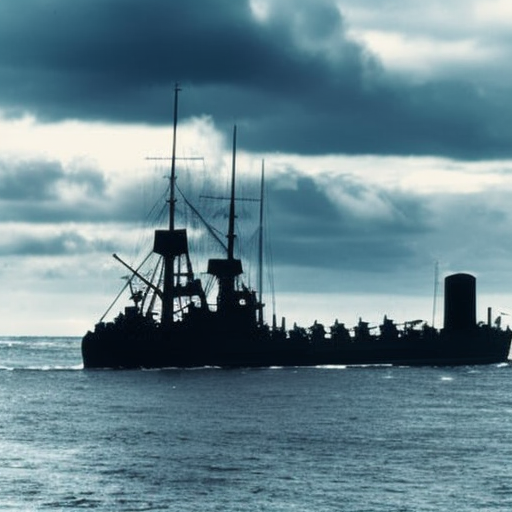Battle of the Atlantic: The Struggle for Control of the Atlantic Ocean during World War II
The Battle of the Atlantic was a crucial naval campaign fought during World War II between the Allies and the Axis powers for control of the Atlantic Ocean. Lasting from 1939 to 1945, it was the longest continuous military campaign of the war and had a significant impact on the outcome of the conflict.
Summary:
The Battle of the Atlantic was primarily fought between German U-boats (submarines) and Allied convoys transporting vital supplies across the Atlantic. The German objective was to disrupt the flow of supplies to Britain and isolate it from its allies, while the Allies sought to protect their convoys and maintain the vital supply lines.
Phase 1: 1939-1941
At the start of the war, Germany launched a submarine campaign to sink merchant ships carrying supplies to Britain. The German U-boats, operating in “wolf packs,” targeted convoys and inflicted heavy losses on Allied shipping. The Allies initially struggled to counter this threat, lacking effective anti-submarine warfare tactics and equipment.
Phase 2: 1941-1943
The turning point in the Battle of the Atlantic came in 1941 when the Allies introduced new technologies and tactics to combat the U-boat menace. These included improved sonar systems, radar, and the widespread use of long-range aircraft for convoy protection. The introduction of the convoy system, where merchant ships traveled in groups escorted by warships, also proved crucial in reducing losses.
Phase 3: 1943-1945
By 1943, the tide had turned in favor of the Allies. The German U-boat fleet suffered heavy losses due to improved Allied tactics and intelligence. The Allies also increased their production of escort vessels, including corvettes, frigates, and destroyers, which were better equipped to counter the U-boat threat. The development of new technologies, such as the Hedgehog anti-submarine weapon and improved depth charges, further enhanced the Allies’ anti-submarine capabilities.
Impact and Significance
The Battle of the Atlantic had a profound impact on the outcome of World War II. The success of the Allied convoys in maintaining the flow of supplies to Britain played a crucial role in sustaining the war effort. Without these supplies, Britain would have been unable to continue the fight against Germany. The Battle of the Atlantic also prevented Germany from fully utilizing its U-boat fleet for offensive operations against Allied shipping and forced them to divert resources to protect their own supply lines.
The Battle of the Atlantic was a costly campaign for both sides. Over 3,500 merchant ships and 175 warships were sunk by U-boats, resulting in the loss of thousands of lives. On the German side, over 800 U-boats were deployed during the war, with more than 700 being sunk. The Allies suffered heavy losses as well, with over 30,000 merchant sailors and naval personnel losing their lives.
In May 1943, the tide turned decisively in favor of the Allies, as the number of U-boats sunk exceeded the number being built. This marked a turning point in the Battle of the Atlantic and paved the way for the successful invasion of Europe in 1944. By the end of the war, the Allies had gained control of the Atlantic Ocean, ensuring the safe passage of troops and supplies for the D-Day landings and the subsequent liberation of Europe.
In conclusion, the Battle of the Atlantic was a critical campaign that determined the outcome of World War II. Through the use of new technologies, tactics, and increased production of escort vessels, the Allies were able to overcome the U-boat threat and maintain the vital supply lines to Britain. The victory in the Battle of the Atlantic played a significant role in the ultimate defeat of Germany and the liberation of Europe.












